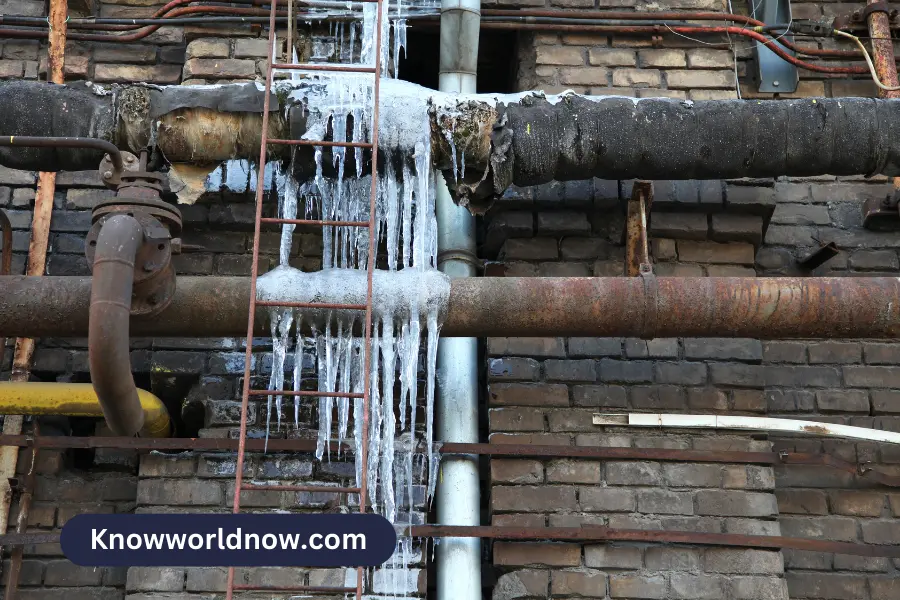As winter settles in, homeowners across the US face a common yet damaging problem: frozen water pipes. A seemingly harmless drop in temperature can lead to burst pipes, costly repairs, and significant water damage.
In this blog post, we’ll discuss practical steps to both fix and prevent frozen pipes from wreaking havoc on your home. With expert tips on plumbing maintenance and winterization techniques, you’ll be well-equipped to protect your property from the harsh effects of cold weather.
How to prevent frozen pipes
To prevent frozen pipes, it’s important to disconnect any garden hoses from exterior faucets, keep the thermostat at a consistent temperature, and insulate pipes and walls with heat tape or foam insulation.
Consider contacting a professional to prep your system for you. Need a pro plumber? Visit this link – https://www.plumbtechplumbingandheating.com/.
Disconnect garden hoses from exterior faucets
One of the simplest preventative measures homeowners can take to avoid frozen pipes is disconnecting garden hoses from exterior faucets during cold weather. While it may not seem significant, leaving hoses attached can cause water to become trapped in the hose and faucet, potentially leading to freezing conditions within your plumbing system.
To prevent this issue entirely, ensure that you remove all garden hoses before winter arrives or when cold snaps are expected. Once disconnected, neatly store them away in a dry and sheltered location such as a garage or shed.
Additionally, consider investing in frost-free sillcocks for exterior faucets which have an extended valve that shuts off water inside the home instead of at the spigot outside – significantly reducing the risk of frozen pipes due to connected garden hoses.
Keep the thermostat at a consistent temperature
Maintaining a consistent temperature inside your house is essential to prevent frozen pipes. When the outdoor temperatures drop, it’s understandable that you may want to drop the heat and save on energy bills.
However, this can lead to disaster if left unchecked. It’s advised that you keep your thermostat at the same temperature in the daytime and night times, whether or not you are at home. This will help prevent hot and cold spots in your house, which can create colder areas where pipes are more exposed to freezing temperatures.
By keeping a consistent temperature inside your home, regardless of outside weather conditions, you’ll be taking one of the most crucial preventative measures against frozen water lines during winter months.
Insulate pipes and walls
You can prevent frozen pipes by insulating both your pipes and walls. This can be done with foam insulation, which can be found online or at a hardware store. Adding this insulation helps keep the heat in and prevents the cold air from freezing your pipes.
Insulating also helps lower energy bills as it reduces heat transfer and keeps warmth inside your home for longer periods of time. Some professionals recommend covering outside faucets with insulated covers during colder months as well to further protect them from freezing temperatures.
Allow faucets to drip
During extremely cold weather, it’s a good idea to allow your faucets to drip at a slow pace. This may seem counterintuitive since we usually try to conserve water, but in this case, allowing the faucet to drip can actually prevent pipes from freezing solid and bursting.
To put things into perspective, imagine you’re laying down a long straw on top of an ice cube. If you suck air out of one side while blocking off the other end with your finger, eventually the pressure differential will cause the straw to collapse as it tries to maintain its shape against the ice blockage.
Similarly, frozen water expands rapidly within confined spaces like plumbing systems leading to potential breakages.
How to fix frozen pipes
To fix frozen pipes, start by identifying the section that is frozen and turn off the water supply. Then, use safe methods to thaw the pipes and check for damages.
Identify the frozen section
If your pipes have frozen over, first identify the section that’s affected. This can be done by switching all of your faucets on and checking which ones don’t produce water. Another way is to inspect visible pipes in crawl spaces or basements for frost or ice buildup.
It’s important not to use any electrical appliances near frozen pipes since they could potentially cause a fire hazard if they come into contact with water. Instead, try using safe methods like hot towels or a hairdryer set on low heat to slowly thaw out the pipe from the faucet end towards the frozen area.
Turn off the water supply
One important step in fixing frozen pipes is turning off the water supply. This prevents any further water from entering the affected area and causing more damage. If you’re unsure where your main water shut-off valve is located, it’s recommended to locate it beforehand so that you’re prepared for emergencies like this.
Usually, the valve is located near your water meter or along the foundation wall inside of your home. Remember to turn off the power supply if necessary and drain all remaining water from faucets and appliances connected to the pipes before thawing begins.
Thaw pipes using safe methods
If you find yourself faced with frozen pipes, it is important to thaw them safely in order to avoid any further damage. One safe method for thawing pipes is by using a hairdryer or heat lamp on the lowest setting and directing the warm air flow towards the frozen section of the pipe.
Another method is to wrap towels soaked in hot water around the affected area. It’s crucial not to use an open flame (e.g., propane torch) as this can damage your plumbing and result in fires.
Be patient while thawing your pipes, as forcing them to defrost too quickly may cause them to
burst due to rapid expansion once they start flowing again.
By taking preventative measures such as insulating your pipes and maintaining consistent temperatures, you can minimize the possibility of frozen pipes altogether. In case you’re unsure how best to prevent or fix frozen pipes, hiring a licensed plumber could be a smart move – especially if you live in areas that are prone to severe cold weather conditions.
Check for damages
After successfully thawing your frozen pipes, it’s time to check for damages. Turn on the water supply slowly and pay attention to any leaks or burst pipes. Check all faucets, toilets, showers, and exposed pipes for signs of damage.
It’s important to address any damages quickly since even small leaks can lead to significant water damage in your home over time. A professional plumber can help to assess the extent of the damage and even help you determine which components need repairs or replacements.
Conclusion
Frozen water pipes can be a major headache for any homeowner, but with proper preventative measures and quick action when they do occur, you can minimize the damage. Remember to disconnect garden hoses from exterior faucets, keep your thermostat at a consistent temperature, insulate pipes and walls, and allow faucets to drip during cold weather.
If you do encounter frozen pipes, identify the frozen section immediately and turn off the water supply before safely thawing them out. Be sure to check for damages and call in professional help if needed.


